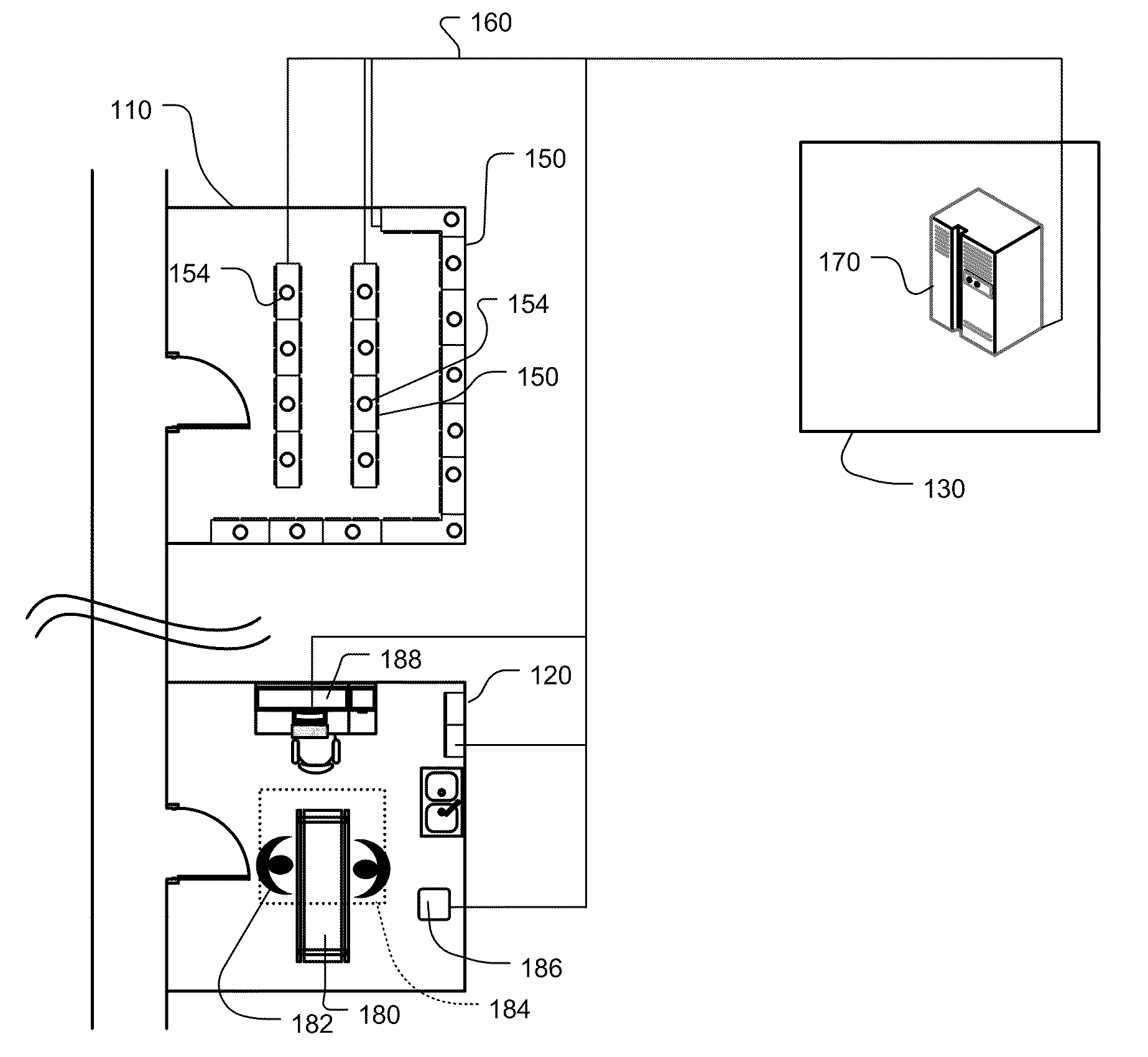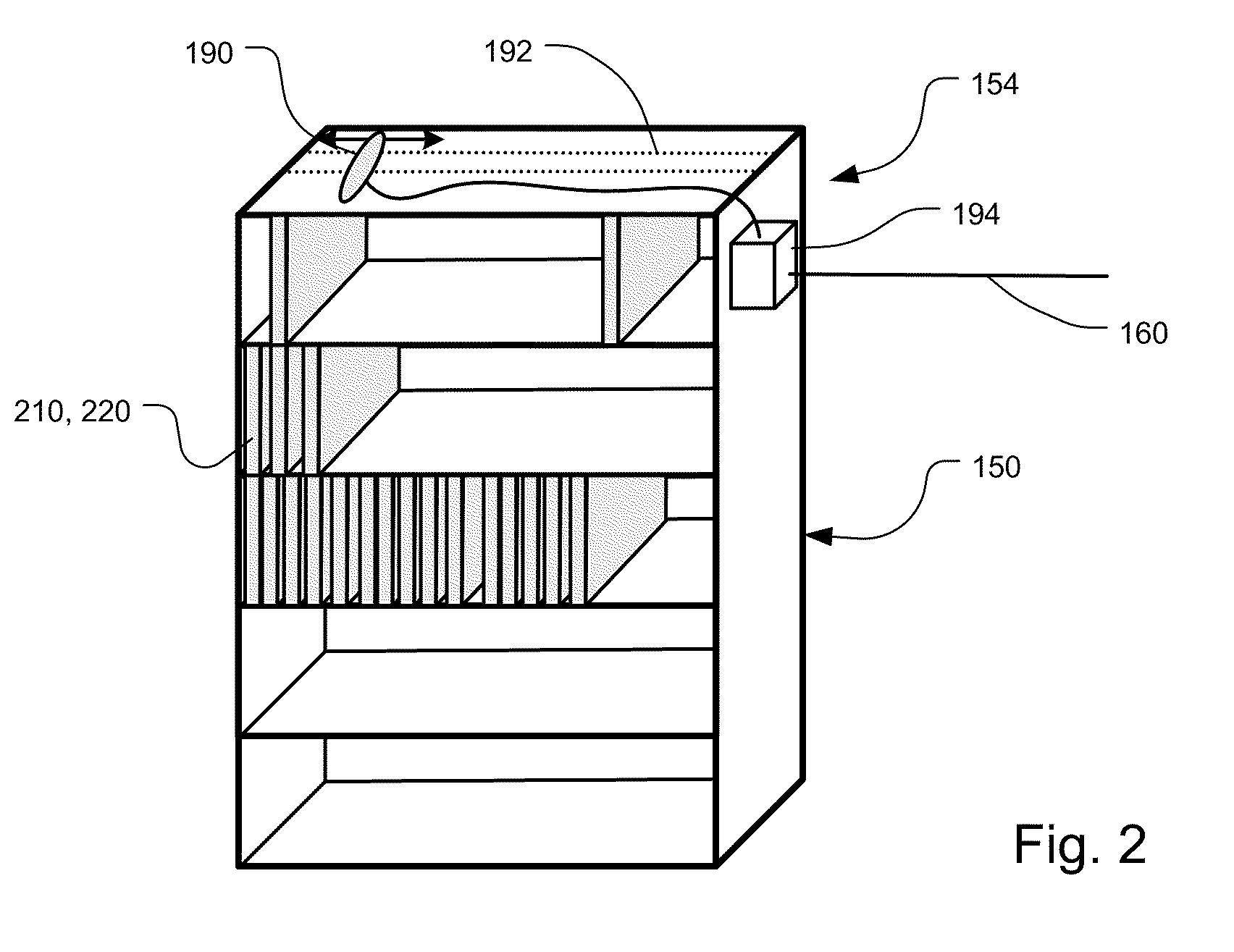RFID Medical Supplies Consumption Monitoring System and Method
a consumption monitoring system and monitoring system technology, applied in the direction of burglar alarm by hand-portable article removal, burglar alarm mechanical actuation, instruments, etc., can solve the problems of difficult to trace the full history of a particular item, data entry often must be performed, and the general deterioration of tracking using these systems
- Summary
- Abstract
- Description
- Claims
- Application Information
AI Technical Summary
Benefits of technology
Problems solved by technology
Method used
Image
Examples
Embodiment Construction
Hospital Tracking System
[0032]FIG. 1 shows one embodiment of a tracking system which has been constructed according to the principals of the present invention.
[0033]The tracking system is described in the context of a hospital or other medical care delivery facility such as a long-term care facility, doctors' office, animal hospital, and other institution that delivers medical care including state institutions and prisons.
[0034]The hospital or other medical care facility generally comprises a medical supply room 110 that is devoted to housing supplies including medical items, a procedure room 120 where the medical items are used, such as consumed or implanted in patients, and a local or off-site server or network area 130 that houses the information technology infrastructure for the facility.
[0035]In more detail, the medical supply room 110 in the example comprises a number of medical supply cabinets or other storage units 150. In the preferred embodiment, each of the medical supply...
PUM
 Login to View More
Login to View More Abstract
Description
Claims
Application Information
 Login to View More
Login to View More - R&D
- Intellectual Property
- Life Sciences
- Materials
- Tech Scout
- Unparalleled Data Quality
- Higher Quality Content
- 60% Fewer Hallucinations
Browse by: Latest US Patents, China's latest patents, Technical Efficacy Thesaurus, Application Domain, Technology Topic, Popular Technical Reports.
© 2025 PatSnap. All rights reserved.Legal|Privacy policy|Modern Slavery Act Transparency Statement|Sitemap|About US| Contact US: help@patsnap.com



